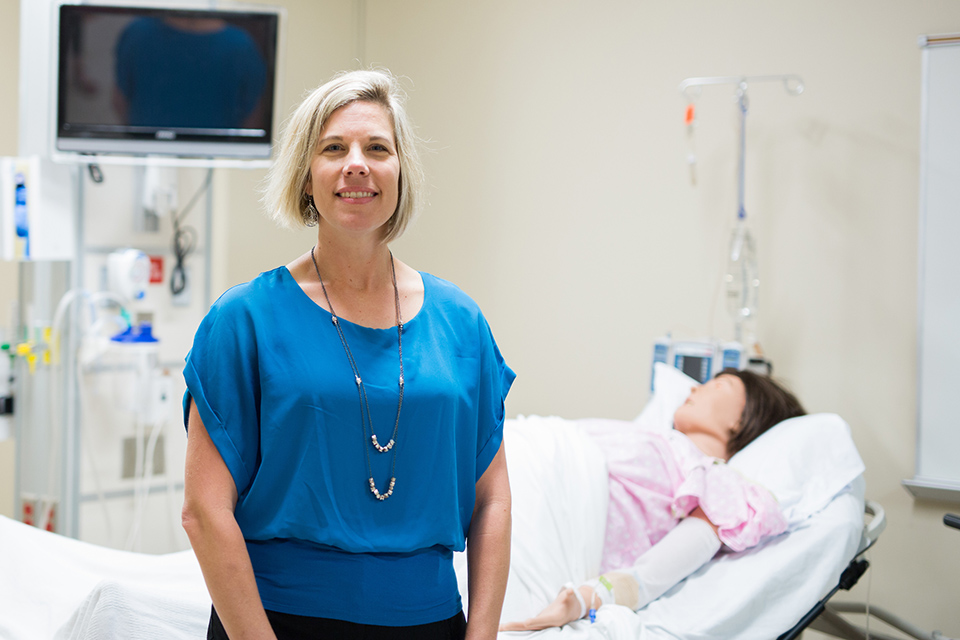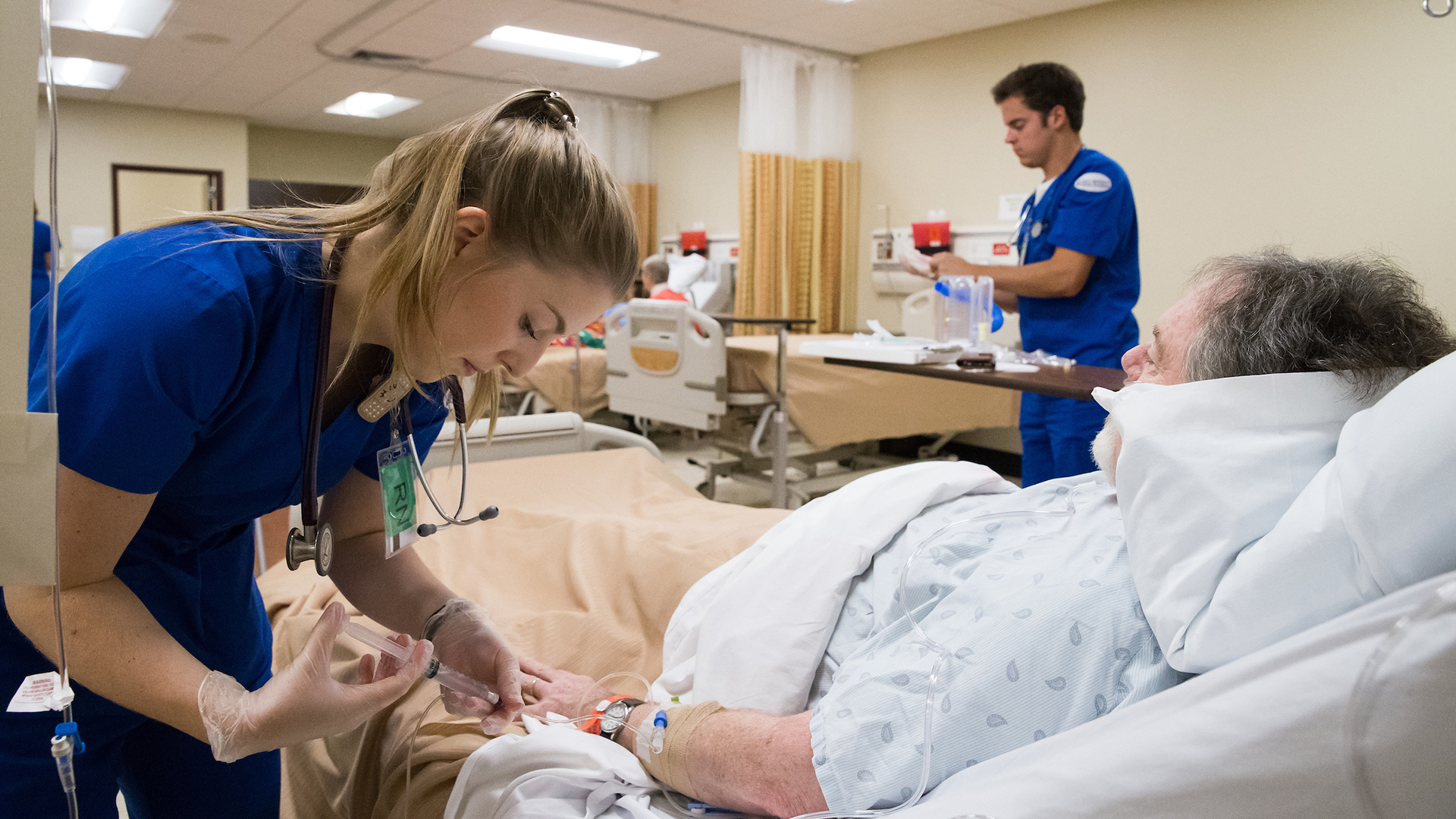Last year, Samford’s Experiential Learning and Simulation Center measured roughly 18,000 student visits to its floor in the College of Health Sciences. This high traffic is the result of a robust daily schedule of simulation activities that utilized the more than 30 labs and debriefing rooms within the center.
“Health care simulation gives students a space to build upon their clinical knowledge and skills within a safe environment,” said Jill Pence, professor and executive director of the Experiential Learning and Simulation Center.
“To fully prepare our students, we strive to make the experiences as realistic as possible, but, of course, there are limits.”
The center’s use of standardized patients, or professionals trained to act out symptoms and reactions, adds a dynamic dimension of realism to each scenario—as does its use of real equipment and a simulated electronic health record system.
Yet an area where these limits can be seen is in the use of an IV system. In a scenario with a standardized patient, much of the IV experience requires imagination since a student cannot actually inject someone with medicine. Instead, students can only realistically practice connecting the tubing, working with the IV pump and hanging the IV bag on the pole.
“I just felt like we could do more,” said Shannon Ashe, an instructor and simulation lab coordinator in the Experiential Learning and Simulation Center. “We have pads students can use to practice starting an IV, but with nowhere for the fluids to run, they are missing an important aspect of the learning experience.”

Ashe knew a solution was out there; she would just need to invent it. “I worked to adapt existing IV tubing that we weren’t using to create an entirely new system. I needed the fluid to run down the IV line, but as it approached the standardized patient, it had to reroute,” she said.
After designing a few prototypes, she was able to achieve this vision. Her invention, which she named the SimIV, uses real IV tubing and connection points to reroute fluid once it has reached the standardized patient’s arm to flow into a small, portable drainage bag that could be clipped to a standardized patient’s hip.
“This may seem like a small change, but it adds an important dimension,” Ashe said. “We can now incorporate this experience into the simulation, training our standardized patients to flinch or comment about the fluid temperature or side effects.”
While her new device was created to be used with a standardized patient, Ashe’s ingenuity made it so the SimIV could be used on the center’s health care manikins as well.
“We are dedicated to seeking solutions that improve the simulation experience because we know that the work being done here is vital in the lives of our students and their future patients,” Pence said. “It’s okay for students to make mistakes here; it’s how we learn best. But we create this safe environment so when student go into the clinical setting, they can apply what they’ve learned and not make critical mistakes.”
Take a Tour
Look inside the Experiential Learning and Simulation Center, which spans 22,000 square feet and offers discipline-specific and interdisciplinary learning opportunities across the simulation continuum.

